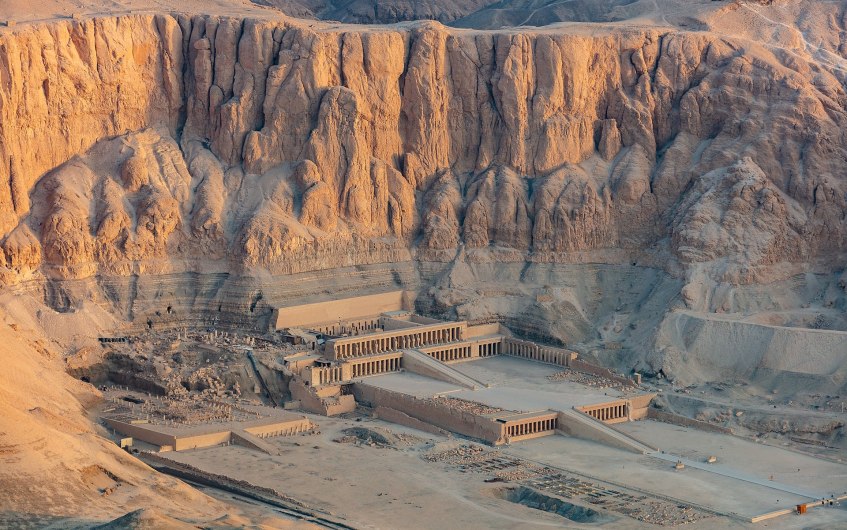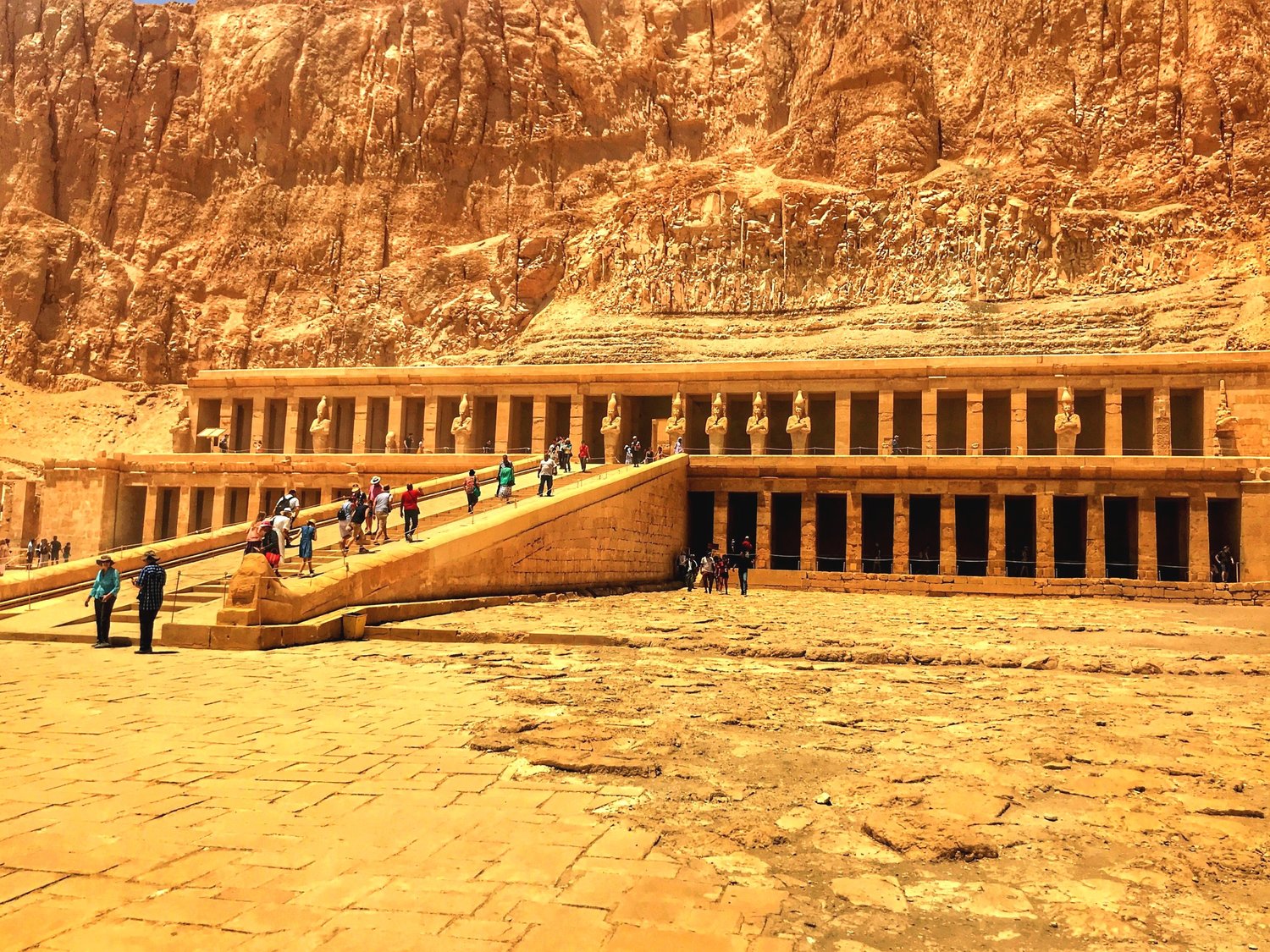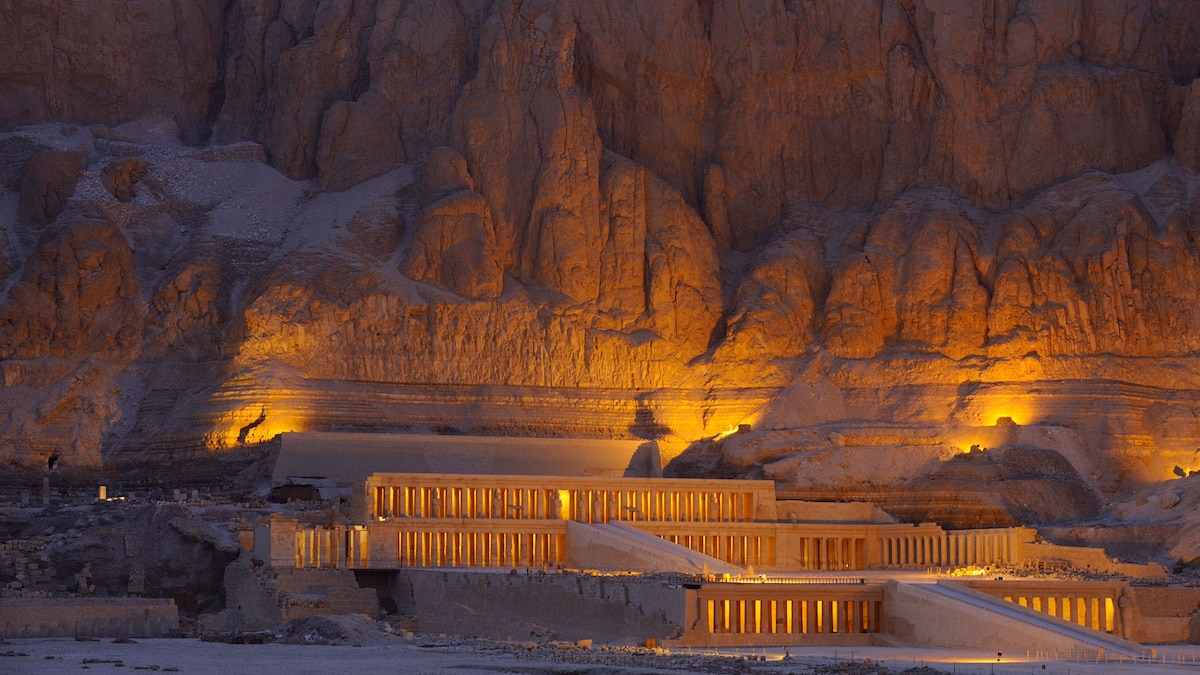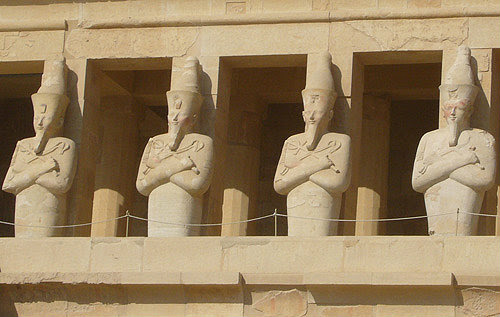The Mortuary Temple of Hatshepsut stands as one of Ancient Egypt’s most breathtaking monuments, located at Deir el-Bahari on the Nile’s west bank, close to the Valley of the Kings in Upper Egypt. Commissioned by Queen Hatshepsut, the fifth pharaoh of the 18th Dynasty and the second recorded female pharaoh, its construction began around 1479 B.C. and took approximately fifteen years to complete.
Table of Contents
ToggleA Symbol of Prosperity
Hatshepsut’s reign is remembered as one of Egypt’s most prosperous and peaceful eras. Her temple—dedicated to the god Amun and to herself—embodies this legacy through its stunning architecture and innovative design. Rising to an impressive height of 97 feet (29.5 meters), the structure features three grand terraces, each meticulously planned to integrate seamlessly with the surrounding landscape. The temple includes majestic pylons, expansive courtyards, a hypostyle hall, a sun court, chapel, and sanctuary, showcasing the architectural sophistication of the time.

Gardens of Abundance
Long ramps connect the terraces, which were originally adorned with lush gardens filled with exotic plants, including fragrant frankincense and myrrh trees. These gardens not only served an aesthetic purpose but also highlighted Hatshepsut’s wealth and her dedication to the gods, enhancing the temple’s role as a religious center. The cultivation of these plants was significant as frankincense and myrrh were highly valued in ancient Egyptian rituals and trade.

Architectural Innovation: Light and Alignment
One of the temple’s most ingenious features is its alignment with the winter solstice sunrise. This architectural marvel incorporates a unique light-box mechanism that allows sunlight to travel along the temple’s central axis. As the sun rises, it successively illuminates the god Amun-Ra, a kneeling figure of Thutmose III—Hatshepsut’s stepson—and finally the Nile god Hapi. This sequence of illumination serves as a powerful tribute to both divine power and Hatshepsut’s enduring vision, reflecting her role as a mediator between the gods and her people. The careful consideration of light within the temple not only highlights Hatshepsut’s understanding of astronomy but also her intention to connect the divine with the physical realm.

Artistic Narratives and Symbolism
The temple also contains remarkable reliefs and inscriptions that depict Hatshepsut’s divine birth, her expedition to the Land of Punt, and her accomplishments as a pharaoh. These narratives not only celebrate her achievements but also assert her legitimacy in a male-dominated society. The scenes carved into the walls illustrate her prowess as a ruler and her close relationship with the gods, further solidifying her position as a significant figure in Egyptian history.

A Lasting Legacy
Today, the Mortuary Temple of Hatshepsut remains a testament to her extraordinary legacy, drawing visitors from around the world who come to admire its grandeur and to ponder the life of a queen who defied conventions to carve her place in history. Despite the challenges faced during her reign and the subsequent erasure of her memory by later pharaohs, Hatshepsut’s temple stands resilient, inviting us to explore the remarkable story of a woman who rose to power in an era where such achievements were rare.

In conclusion, the Mortuary Temple of Hatshepsut is not merely an architectural feat; it is a powerful symbol of a woman’s strength, ingenuity, and lasting influence on one of history’s greatest civilizations.

